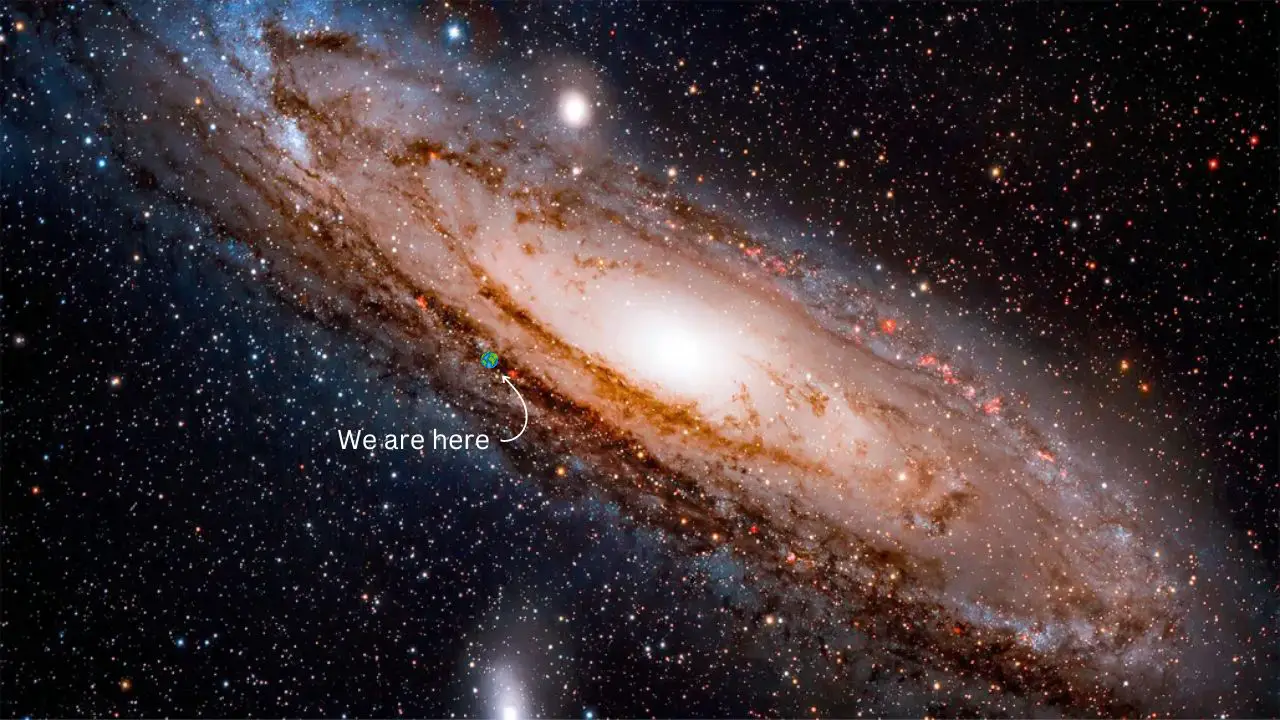Earth resides approximately 26,000 light-years away from the galactic centre. Our planet finds its place within one of the vast expanse of the Milky Way’s spiral arms, known as the Orion Arm. Understanding our position within the Milky Way opens a gateway to unravelling the grandeur and mysteries of the universe. Let’s dive deep into the details.
What is the location of Earth in the Milky Way?

Nestled within a region known as Orion Spur (situated in between Sagittarius and Perseus Arms), our Earth holds a humble position in the vast galactic tapestry. This celestial neighbourhood is approximately 26,000 light-years away from the galactic centre.
How far is Earth from the Centre of the Milky Way?
The approximate distance of Earth from the centre of the Milky Way is estimated to be about 26,000 light-years (8 kiloparsecs). Earth lies between the swirling sea of stars in the grand galactic tapestry known as the Milky Way.
Which part of the Milky Way do we see?
Earth’s location within the Milky Way impacts our view of the galaxy and affects our ability to observe. Earth is placed in a swirling sea of stars in the Milky Way. The Milky Way is shaped like a disk but when we look up in the night sky we only get to see a band of stars rather than a disk. It is because the Milky Way is a spiral galaxy which is why we only get to see a concentrated band. If we were in an elliptical galaxy, we would have observed stars spread out in all directions, rather than concentrated in a single band.
Also Read: What is at the centre of the Milky Way?
Habitable planets in the same region of the Milky Way as Earth?
There are several potentially habitable planets in the same region of the Milky Way as Earth. Here are a few examples:
🔬 Subscribe to SciMail
Get the latest science discoveries straight to your inbox!
- TRAPPIST-1e: This planet is part of a system orbiting the star TRAPPIST-1. It is considered one of the most likely candidates to support life.
- Kepler-1649 c: This planet was discovered through reanalysis of data from NASA’s Kepler Space Telescope. It is located 300 light-years from Earth and is most similar to Earth.
- TOI 700 d: This planet is located in a habitable zone, where liquid surface water could potentially exist. It is a near-Earth-sized exoplanet, orbiting within the habitable zone of the red dwarf TOI-700.
How does Earth’s location affect our understanding of the Milky Way’s structure?
Earth’s position in the Milky Way has a crucial role in shaping our understanding of the galaxy’s structure. For instance; in 2022, scientists captured the first-ever image of the shadow of a supermassive black hole known as Sagittarius A*.
What are a few ongoing missions about Earth’s position in the Milky Way?
Gaia Mission: The Gaia mission by the European Space Agency is particularly dedicated to mapping the positions, distances, and motions of stars in the Milky Way.
NASA’s Kepler Mission: The primary goal of the Kepler mission is to search for exoplanets.
Sloan Digital Sky Survey (SDSS): The SDSS is an ongoing project that aims to create a detailed three-dimensional map of the Milky Way and other galaxies.


Leave a Reply